Capital One 2012 Annual Report Download - page 33
Download and view the complete annual report
Please find page 33 of the 2012 Capital One annual report below. You can navigate through the pages in the report by either clicking on the pages listed below, or by using the keyword search tool below to find specific information within the annual report.-
 1
1 -
 2
2 -
 3
3 -
 4
4 -
 5
5 -
 6
6 -
 7
7 -
 8
8 -
 9
9 -
 10
10 -
 11
11 -
 12
12 -
 13
13 -
 14
14 -
 15
15 -
 16
16 -
 17
17 -
 18
18 -
 19
19 -
 20
20 -
 21
21 -
 22
22 -
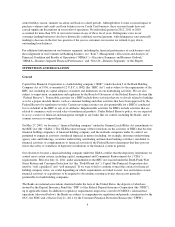 23
23 -
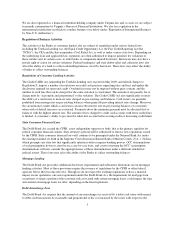 24
24 -
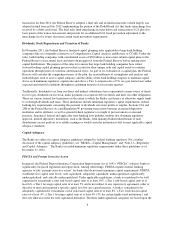 25
25 -
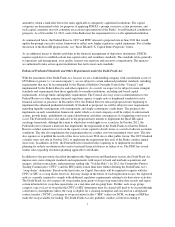 26
26 -
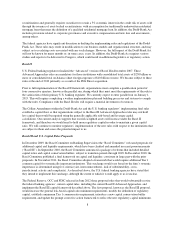 27
27 -
 28
28 -
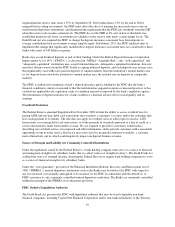 29
29 -
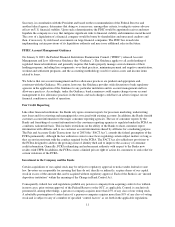 30
30 -
 31
31 -
 32
32 -
 33
33 -
 34
34 -
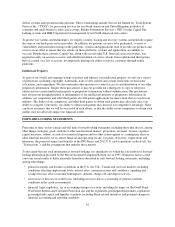 35
35 -
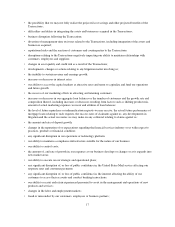 36
36 -
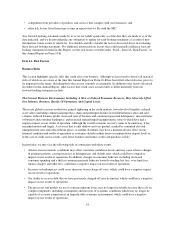 37
37 -
 38
38 -
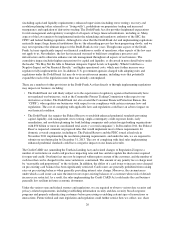 39
39 -
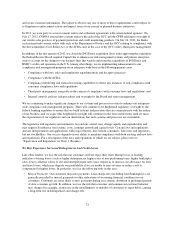 40
40 -
 41
41 -
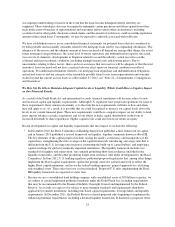 42
42 -
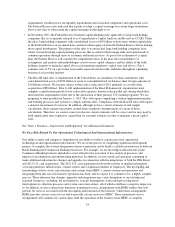 43
43 -
 44
44 -
 45
45 -
 46
46 -
 47
47 -
 48
48 -
 49
49 -
 50
50 -
 51
51 -
 52
52 -
 53
53 -
 54
54 -
 55
55 -
 56
56 -
 57
57 -
 58
58 -
 59
59 -
 60
60 -
 61
61 -
 62
62 -
 63
63 -
 64
64 -
 65
65 -
 66
66 -
 67
67 -
 68
68 -
 69
69 -
 70
70 -
 71
71 -
 72
72 -
 73
73 -
 74
74 -
 75
75 -
 76
76 -
 77
77 -
 78
78 -
 79
79 -
 80
80 -
 81
81 -
 82
82 -
 83
83 -
 84
84 -
 85
85 -
 86
86 -
 87
87 -
 88
88 -
 89
89 -
 90
90 -
 91
91 -
 92
92 -
 93
93 -
 94
94 -
 95
95 -
 96
96 -
 97
97 -
 98
98 -
 99
99 -
 100
100 -
 101
101 -
 102
102 -
 103
103 -
 104
104 -
 105
105 -
 106
106 -
 107
107 -
 108
108 -
 109
109 -
 110
110 -
 111
111 -
 112
112 -
 113
113 -
 114
114 -
 115
115 -
 116
116 -
 117
117 -
 118
118 -
 119
119 -
 120
120 -
 121
121 -
 122
122 -
 123
123 -
 124
124 -
 125
125 -
 126
126 -
 127
127 -
 128
128 -
 129
129 -
 130
130 -
 131
131 -
 132
132 -
 133
133 -
 134
134 -
 135
135 -
 136
136 -
 137
137 -
 138
138 -
 139
139 -
 140
140 -
 141
141 -
 142
142 -
 143
143 -
 144
144 -
 145
145 -
 146
146 -
 147
147 -
 148
148 -
 149
149 -
 150
150 -
 151
151 -
 152
152 -
 153
153 -
 154
154 -
 155
155 -
 156
156 -
 157
157 -
 158
158 -
 159
159 -
 160
160 -
 161
161 -
 162
162 -
 163
163 -
 164
164 -
 165
165 -
 166
166 -
 167
167 -
 168
168 -
 169
169 -
 170
170 -
 171
171 -
 172
172 -
 173
173 -
 174
174 -
 175
175 -
 176
176 -
 177
177 -
 178
178 -
 179
179 -
 180
180 -
 181
181 -
 182
182 -
 183
183 -
 184
184 -
 185
185 -
 186
186 -
 187
187 -
 188
188 -
 189
189 -
 190
190 -
 191
191 -
 192
192 -
 193
193 -
 194
194 -
 195
195 -
 196
196 -
 197
197 -
 198
198 -
 199
199 -
 200
200 -
 201
201 -
 202
202 -
 203
203 -
 204
204 -
 205
205 -
 206
206 -
 207
207 -
 208
208 -
 209
209 -
 210
210 -
 211
211 -
 212
212 -
 213
213 -
 214
214 -
 215
215 -
 216
216 -
 217
217 -
 218
218 -
 219
219 -
 220
220 -
 221
221 -
 222
222 -
 223
223 -
 224
224 -
 225
225 -
 226
226 -
 227
227 -
 228
228 -
 229
229 -
 230
230 -
 231
231 -
 232
232 -
 233
233 -
 234
234 -
 235
235 -
 236
236 -
 237
237 -
 238
238 -
 239
239 -
 240
240 -
 241
241 -
 242
242 -
 243
243 -
 244
244 -
 245
245 -
 246
246 -
 247
247 -
 248
248 -
 249
249 -
 250
250 -
 251
251 -
 252
252 -
 253
253 -
 254
254 -
 255
255 -
 256
256 -
 257
257 -
 258
258 -
 259
259 -
 260
260 -
 261
261 -
 262
262 -
 263
263 -
 264
264 -
 265
265 -
 266
266 -
 267
267 -
 268
268 -
 269
269 -
 270
270 -
 271
271 -
 272
272 -
 273
273 -
 274
274 -
 275
275 -
 276
276 -
 277
277 -
 278
278 -
 279
279 -
 280
280 -
 281
281 -
 282
282 -
 283
283 -
 284
284 -
 285
285 -
 286
286 -
 287
287 -
 288
288 -
 289
289 -
 290
290 -
 291
291 -
 292
292 -
 293
293 -
 294
294 -
 295
295 -
 296
296 -
 297
297 -
 298
298 -
 299
299 -
 300
300 -
 301
301 -
 302
302 -
 303
303 -
 304
304 -
 305
305 -
 306
306 -
 307
307 -
 308
308 -
 309
309 -
 310
310 -
 311
311
 |
 |

period to work towards compliance with the regulation. Key proposed changes that we expect would impact
COEP include:
• Requirement on companies to notify any breach of the regulation to the Information Commissioner’s Office
(“ICO”) and to individuals whose data has been affected or compromised as a result of the breach;
• Increased powers, including the ability to assess fines, given to the ICO;
• Requirement to conduct a Privacy Impact Assessment for all areas of the business including any changes to
systems.
• Mandatory appointment of a data protection officer who must act independently and autonomously at all
times.
• Widening of the definition of personal data.
Canada
In Canada, COBNA operates as an authorized foreign bank pursuant to the Bank Act (Canada) (the “Bank Act”)
and is permitted to conduct its credit card business in Canada through its Canadian branch, Capital One Bank
(Canada Branch) (“Capital One Canada”). The primary regulator of Capital One Canada is the Office of the
Superintendent of Financial Institutions Canada (“OSFI”). Other regulators include the Financial Consumer
Agency of Canada (“FCAC”), the Office of the Privacy Commissioner of Canada, and the Financial Transactions
and Reports Analysis Centre of Canada. Capital One Canada is subject to regulation under various Canadian
federal laws, including the Bank Act and its regulations, the Proceeds of Crime (Money Laundering) and
Terrorist Financing Act and the Personal Information Protection and Electronic Documents Act.
In 2012, there were two new regulatory developments that affect credit cards issued by federally regulated
financial institutions in Canada. These amendments could increase our operational and compliance costs and
affect the types and terms of products that we offer in Canada.
In March 2012, Negative Option Billing Regulations were made under the Bank Act. These regulations require
federally regulated financial institutions to obtain the express consent of individuals before providing new
primary or optional products and services to individuals. Generally, the Negative Option Billing Regulations
prescribe the timing, manner and content of disclosure that must be provided to individuals before they can
expressly consent to new products or services. These regulations came into force on August 1, 2012.
In September 2012, the Credit Business Practices (Banks, Authorized Foreign Banks, Trust and Loan
Companies, Retail Associations, Canadian Insurance Companies and Foreign Insurance Companies) Regulations
were amended to require a bank to obtain express consent prior to providing credit card checks to a borrower. If
consent is given orally, the bank must provide confirmation of that consent in writing (paper or electronic). The
amended regulations also provide that the use of the credit card or the use of the check does not constitute
express consent. These amendments will come into force on June 20, 2013.
COMPETITION
Each of our business segments operates in a highly competitive environment, and we face competition in all
aspects of our business from numerous bank and non-bank providers of financial services.
Our Credit Card business competes with international, national, regional and local issuers of Visa®and
MasterCard®credit cards, as well as with American Express®, Discover Card®, private-label card brands, and, to
a certain extent, issuers of debit cards. In general, customers are attracted to credit card issuers largely on the
basis of price, credit limit and other product features.
Our Consumer Banking and Commercial Banking businesses compete with national and state banks and direct
banks for deposits, auto loans, mortgages and trust accounts and with savings and loan associations and credit
14
